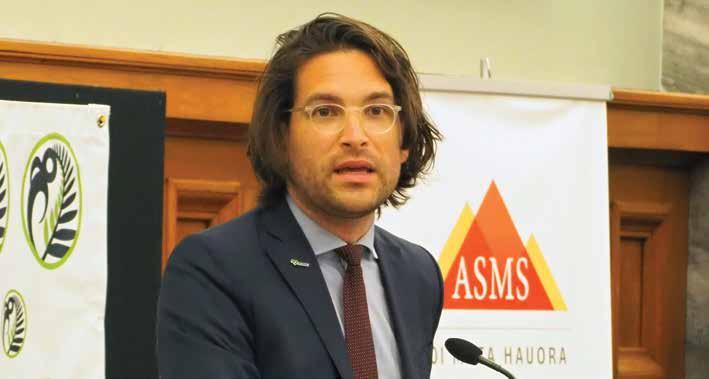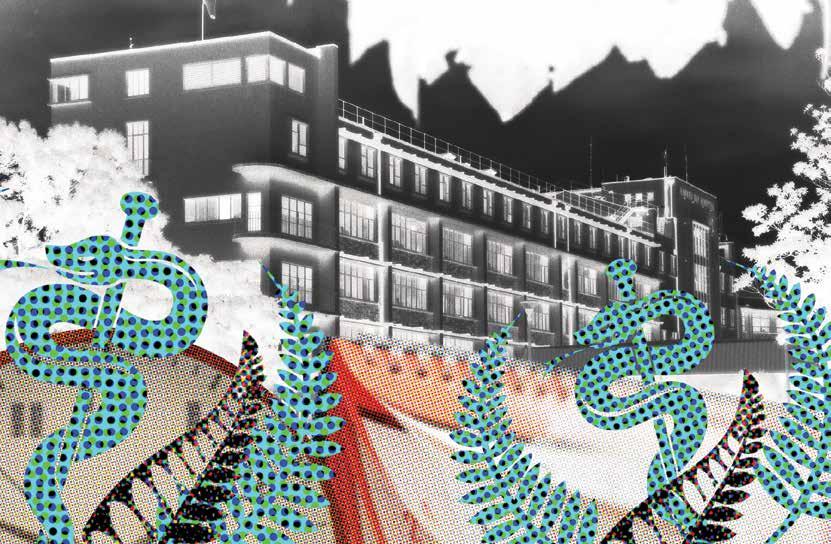
6 minute read
Charity ambulance services causing staff woes
Widespread burnout and pay rates below the Living Wage are behind calls for charity ambulances to become government operated as staff begin to suffer. One paramedic labels the charitable model a “sinking ship” and says changes are needed to secure the services long into the future.
When the emergency telephone number 111 was first introduced, calls were diverted to volunteers, sometimes at their places of work. From 1985 to 1988 in Whangamatā this resulted in emergency calls being diverted to a fish ‘n’ chips shop, often causing some confusion whether the caller wanted an ambulance or some cheap takeaways.
While the way calls to ambulance operators are made has evolved over the years, what remains unchanged is how our ambulance service relies on charity to keep operating and saving lives. Charity only goes so far, with St John reporting its Emergency and Other Transportation Services running at a deficit of $14.5 million. “It’s a sinking ship,” South Island paramedic says Ryan (not his real name). “Staff are leaving. It’s blatant people have died from how bad it’s got.”
The increasing demand for ambulance services has changed the way phone calls were handled. Today, paid triple-one operators handle calls for ambulances, and they are kept busy, with more than 454,000 emergency callouts in 2021 alone. That’s more than 50 calls an hour, every hour of the day.
Details of NASO's arrangements are not publicly disclosed. NASO’s website only says that “a range of operational requirements [are] agreed by the funder and provider” and that “performance against KPIs is subject to ongoing monitoring and reporting”.
Ryan says the focus on KPIs is causing undue pressure and “misses the point” of patient care over speed of first responders.
The National Ambulance Service Office – now part of Te Whatu Ora – has terms and agreements with St John and Wellington Free Ambulance to provide ambulance services. But this revenue is not enough to cover the costs of delivering the services, even with St John attracting the goodwill of clinical volunteers worth an estimated $138 million in labour to its service.
“The Government’s most discernible KPI is how quickly we locate jobs. How quickly the address is verified, how quickly the ambulance is dispatched and then how quickly it arrives. But that measure is not necessarily an ambulance, but a unit. If I’m on my own in a jeep I might get to a job within 25 minutes, but I will have to wait around for 90 minutes for an actual ambulance unit to arrive that can take the patient to hospital.
“It looks good [on paper] as a KPI.”
Wait times for services and transfers gum up the KPIs, compounded by crowding in hospitals. In June 2022 month-on-month record call outs saw media reports of people waiting 12 hours for an ambulance, and St John reported it spent 3,000 hours for the month before – the equivalent of 125 days – waiting to transfer patients into overcrowded hospitals.
The contracted-out model of ambulance care not only puts strain on paramedics like Ryan, it also still requires significant government top-ups. St John op shops sell an impressive $60 million worth of goods every year, but in 2019 the Government provided a $21 million injection over two years to the ambulance sector to “relieve immediate pressures and provide certainty”.
The 2022 budget provided $166 million over four years for 48 ambulances and 13 cars to be added to the road ambulance fleet and up to 248 additional full-time staff to be recruited.
“There’s no point having new ambulances if they’re just sitting in stock,” Ryan said.
“We [at his workplace] don’t have the staffing to crew more than one at a time.”
As late as 2017, New Zealand was an outlier in first-world ambulance services in allowing single-crewed ambulance responses. That year, 35,000 ambulance responses were attended by just the driver of the vehicle.
“I used to have the display of the monitors on the floor of the ambulance cab while I was driving with the cables dragging back into the back where the patient was. I could look down at the ground and keep an eye on what their heart rate and ECG were doing,” Ryan said. “While double-crewing ambulances with paramedics is quite expensive, would we be happy if only 70% of A&E clinics are going to have doctors?”
That year, the Government announced the $15 million a year in extra funding to ensure full ‘double-crewing’, and over the next four years St John added 388 new roles, but they were not all for paramedics.
Of the 388 roles St John added, 8 were intensive care paramedics, 28 were paramedics, 28 were emergency medicine technicians and 302 were emergency medicine assistants. The Emergency Medical Assistant (EMA) qualification is a five-day course.
Staffing issues have taken their toll on those doing the work. This ongoing theme of health care employees overworking to protect patients continues its trend, and the charity-led model is creating significant disputes about pay.
In late 2020, FIRST Union members planned strike action when St John backed out of an agreement to pay time and a quarter on weekend and night shifts due to lack of funds despite a $29 million boost from government.
St John’s 2020–21 Annual Report states, “While St John’s ability to absorb some growth through innovation in service delivery will allow us to be sustainable in the short-term, this does not represent an acceptable medium- or long-term financial strategy. In particular, it is becoming increasingly challenging for community support to continue to grow in line with the future service requirements of St John.”
Ambulances have come a long way in New Zealand since St John set up its first ambulance brigade in Dunedin in 1892. Many owe their lives to the service provided by paramedics under difficult circumstances. As time has gone by, the need and demand of these services has changed along with the funding priorities. As the service has evolved away from having people call a fish ‘n’ chips shop in a life-or-death emergency, perhaps it is now time to evolve the funding model for vital ambulance services.
Andrew Chick | Senior Communications Advisor







